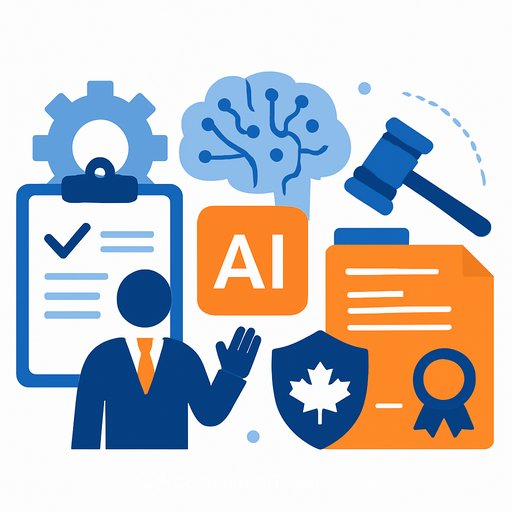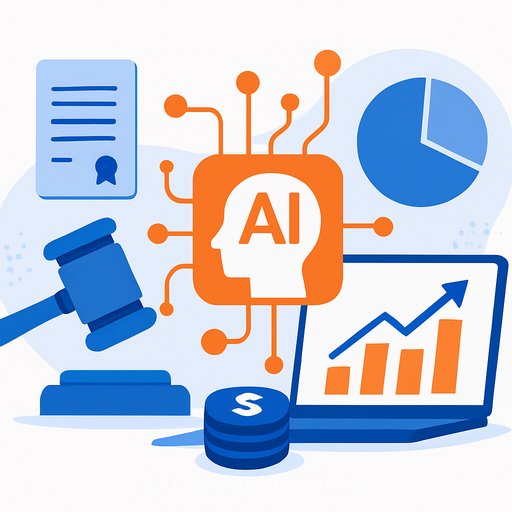AI for witness depositions: Kerala HC's move, and what legal professionals should do next
The Kerala High Court has mandated that, from November 1, district courts in the state will record witness depositions using Adalat.AI, a speech-to-text system. It's a clear signal: reduce manual bottlenecks, free up judicial time, and move cases faster-without compromising accuracy or process integrity.
Most courts still rely on handwritten or typed statements captured under a judge's direction. Automating transcription can trim delays, speed listings, and shorten calendars-provided the system fits courtroom workflows and produces transcripts precise enough for appellate scrutiny.
Why courts are turning to speech-to-text
- Time savings: Redirect judge and stenographer time from dictation to adjudication.
- Throughput: More matters can be heard per day with fewer pauses for dictation and read-backs.
- Consistency: Standardized transcripts reduce variability across courtrooms and districts.
- Accessibility: Clear, searchable text aids counsel, especially in multi-hearing matters.
Risks and legal questions to address upfront
- Accuracy under courtroom conditions: Accents, code-switching, overlap, and legal terms can raise error rates.
- Due process: Parties must have a fair opportunity to review, object, and correct transcripts before they harden into the record.
- Evidence integrity: Chain-of-custody, hashing, and audit trails for audio and text are essential for appellate reliability.
- Confidentiality: Secure storage, encryption, and strict access controls for sensitive and in-camera proceedings.
- Bias and equality of arms: Dialect and language support must not disadvantage any party or witness.
- Vendor dependence: Clear SLAs, availability guarantees, and offline fallbacks to avoid adjournments.
Implementation checklist for courts and bars
- Pilot with a narrow scope (e.g., select districts or case types). Benchmark word error rate (WER) against certified human transcripts.
- Procurement: Demand on-prem or sovereign options, data residency, encryption, model/version transparency, and audit logs.
- Courtroom setup: Tested microphones, noise control, speaker labels, and protocols for multiple speakers and interruptions.
- On-record controls: Simple commands to pause/resume, mark exhibits, and flag "off the record."
- Human-in-the-loop: Real-time display for counsel, immediate read-back, and formal sign-off before certifying the record.
- Multilingual support: Domain dictionaries for legal terms; procedures for translation and certification.
- Data governance: Retention schedules, hashing of audio/text, versioning, and role-based access.
- Fallback plan: Stenographers or vetted manual transcription on standby if the system fails.
- Incident response: Escalation path for mis-transcriptions that affect evidence or cross-examination; docket notes for transparency.
Metrics that matter
- WER by context: Target low error rates for legal terms, names, and numbers; track by courtroom and language.
- Latency: Time from speech to usable text for on-the-spot objections and clarifications.
- Uptime and failure modes: Frequency and duration of service disruptions; time to recover or switch to fallback.
- Cost per hearing hour: Compare to current stenography/transcription costs, including rework.
- Appeal impact: Rate of transcript-based grounds raised and upheld post-adoption.
Policy and procedural updates to codify
- Standing orders: Define the official record, certification steps, and correction windows.
- Consent and notice: Inform parties and witnesses; address objections, especially in sensitive matters.
- Sealed and in-camera handling: Segregated storage, restricted users, and deletion policies.
- Access rights: Who can download audio/text; watermarking and tamper-evident controls.
- Training: Bench, bar, and staff familiarization so hearings don't stall on day one.
Kerala's directive puts speech-to-text in daily courtroom use, not just pilot labs. Courts elsewhere considering similar steps can borrow the playbook: narrow pilot, hard metrics, strong guardrails, and explicit sign-off procedures.
Bottom line for legal teams: Treat AI transcription like any evidentiary tool-verify, challenge, and preserve. The speed gains are real if governance keeps pace.
For background on digital court modernization, see the e-Committee initiatives here: Supreme Court e-Committee. Kerala High Court resources are available at highcourtofkerala.nic.in.
Upskilling for legal workflows
If your chamber or department is standing up AI-enabled workflows, a concise primer on tool selection and process design helps. You can explore role-focused options here: Complete AI Training - Courses by Job.
Your membership also unlocks:






